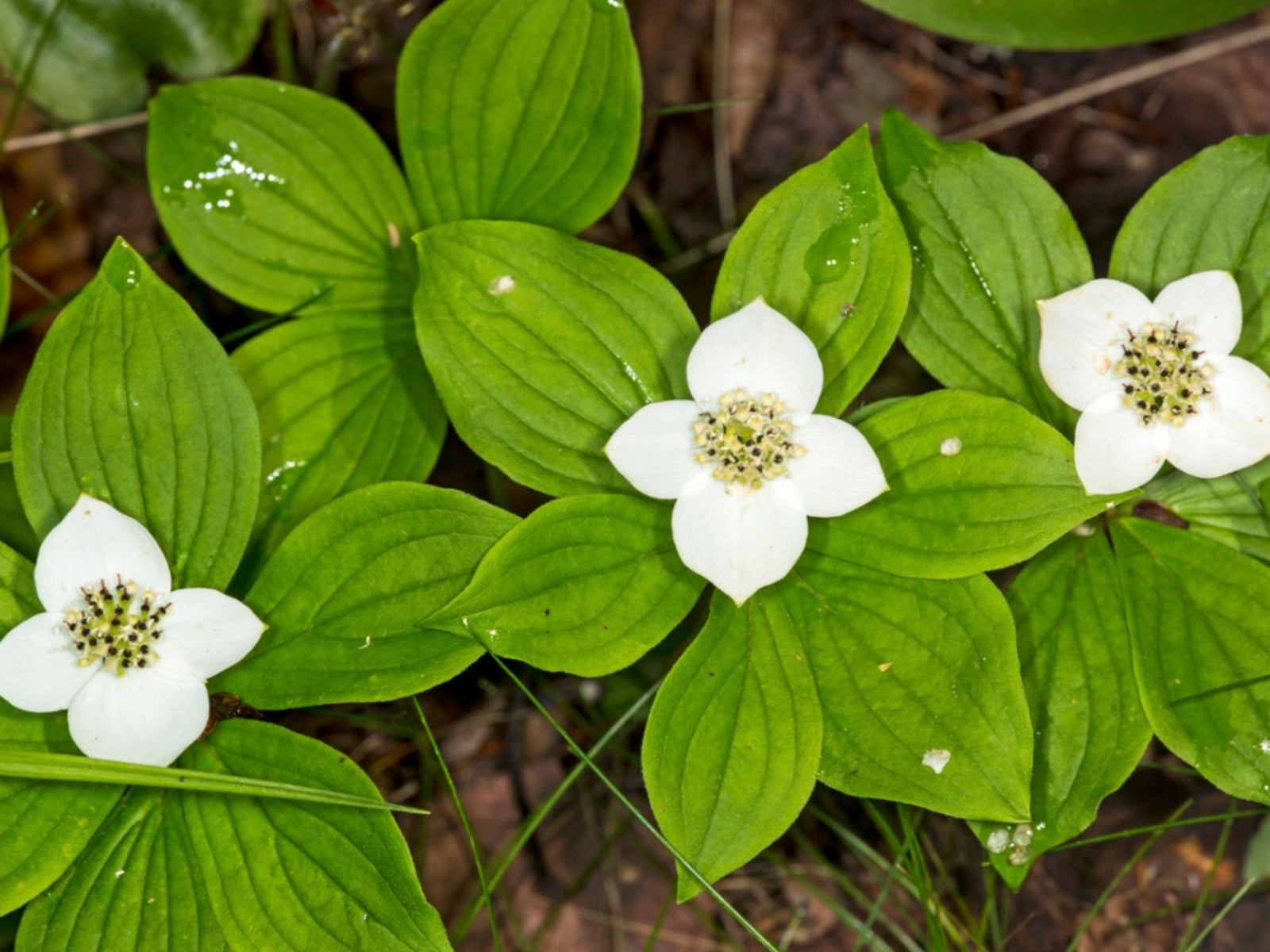Bunchberry Vine: Tips On Caring For Bunchberry Dogwood

Bunchberry (Cornus canadensis) ground cover is a petite ground-hugging perennial plant that reaches only 8 inches (20 cm.) at maturity and spreads by underground rhizomes. It has a woody stem and four to seven leaves that are set up in a whorled pattern at the tip of the stem. Also known as creeping dogwood vine, pretty yellow flowers appear first followed by clusters of red berries that ripen midsummer. The foliage turns a beautiful burgundy red in the fall, making it a great addition to the garden for year-round interest. This showy evergreen ground cover is native to the Pacific northwest and is particularly at home in moist soil and in shaded locations. If you live in USDA plant hardiness zones 2 through 7, you can enjoy the attractive bunchberry ground cover as it draws birds, deer, and other wildlife to the area. Some people even eat the berries, which are said to taste a bit like apples.
How to Grow Bunchberry
Although bunchberry prefers shade, it will tolerate some light morning sun. If you have acidic soil, this plant will also be right at home. Be sure to add plenty of compost or peat moss to the planting area. Bunchberry dogwood plants can be propagated by seed or cuttings. Take cuttings below the ground level in mid July through August. If you choose to use seeds, they must be sown fresh in the fall or after they have had three months of cold treatment. Plant seeds 3/4 of an inch (19 mm.) deep into the soil. Be sure the growing area is moist but also well-draining.
Caring for Bunchberry
It is important that creeping dogwood be kept moist and the soil temperature cool. This is one of the reasons why they do so well in the shade. If the soil temperature is above 65 degrees F. (18 C.), they can wither and die. Cover with a thick layer of pine needles or mulch for added protection and moisture retention. Caring for bunchberry is easy once they get started as long as you keep the soil moist and the plants receive plenty of shade. This ground cover has no known disease or pest problems, making it a truly easy keeper.
Gardening tips, videos, info and more delivered right to your inbox!
Sign up for the Gardening Know How newsletter today and receive a free copy of our e-book "How to Grow Delicious Tomatoes".
-
 Looking For Plants To Give You The Soft And Fuzzies? Try These 5 Fuzzy Leaf Plant Options
Looking For Plants To Give You The Soft And Fuzzies? Try These 5 Fuzzy Leaf Plant OptionsLovers of texture, drama, silver foliage and tactile plants will adore these special sensory garden additions. These fuzzy leaf plant options will leave you all aglow
By Susan Albert
-
 Get Ready For A Summer Of Hummers! Grow These Full Sun Hummingbird Plants and Flowers
Get Ready For A Summer Of Hummers! Grow These Full Sun Hummingbird Plants and FlowersIf you’re lucky enough to enjoy a sunny backyard, make sure you are maxing out on your pollinator opportunities and grow these full sun hummingbird plants and flowers
By Tonya Barnett